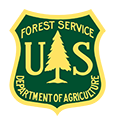Draft Strategic Science Plan ready for community review and public comment: Arctic-COLORS (Arctic-COastal Land Ocean inteRactions)
(Excerpt cross posted from NASA.gov)
...Arctic-COLORS (Arctic-COastal Land Ocean inteRactions) is a Field Campaign Scoping Study funded by NASA's Ocean Biology and Biogeochemistry Program that aims to improve understanding and prediction of land-ocean interactions in a rapidly changing Arctic coastal zone, and assess vulnerability, response, feedbacks and resilience of coastal ecosystems, communities and natural resources to current and future pressures.
NASA is currently seeking feedback on all aspects of the draft Strategic Science Plan for Arctic-COLORS. NASA is particularly looking for feedback to improve the strategic science plan under consideration including feedback on the science questions, approaches, measurements, missing components, and looking to gauge interest in potential partnerships from international and domestic partners, etc.
Call for community review and comments on the Arctic-COLORS Strategic Science Plan >>
Comment period closes Nov. 3, 2015
+ Download Arctic-COLORS Draft Strategic Science Plan [12.5 PDF]
+ Email written comments to obb_comments@cce.nasa.gov
Note: These comments will be sent to the NASA OBB Program and not to the Arctic-COLORS team.
NASA will only consider support for Arctic-COLORS if there is demonstrated community interest that the field campaign and science is state-of-the-art and addresses critical scientific challenges for oceanography and Earth System Science at NASA. Once the feedback on the draft Strategic Science Plan is received, NASA will assimilate the comments and decide whether to move forward with competition of a Science Definition Team to develop the Implementation Plan for Arctic-COLORS. This decision will be made this calendar year (2015) or early next calendar year (2016). Anticipated field seasons would be tentatively slated for later this decade. ...
Science
The Arctic region is warming faster than anywhere else on the planet, triggering rapid social and economic changes and impacting both terrestrial and marine ecosystems. Yet, our understanding of critical processes and interactions along the Arctic land-ocean interface is limited.
Arctic-COLORS (Arctic-COastal Land Ocean inteRactions) is a Field Campaign Scoping Study funded by NASA's Ocean Biology and Biogeochemistry Program that aims to improve understanding and prediction of land-ocean interactions in a rapidly changing Arctic coastal zone, and assess vulnerability, response, feedbacks and resilience of coastal ecosystems, communities and natural resources to current and future pressures.
Science Questions
The science of the Arctic-COLORS field campaign program will be focused on five overarching questions:
1. How and where are materials from the land, atmosphere, and ocean transformed within the land-ocean continuum of the Arctic coastal zone?
2. How does thawing of Arctic permafrost—either directly through coastal erosion or indirectly through changing freshwater loads from upstream thaw—translate to changes in coastal ecology and biogeochemistry?
3. How do changes in snow/ice conditions and coastal circulation influence Arctic coastal ecology and biogeochemistry?
4. How do changes in fluxes of materials, heat, and buoyancy from the land, atmosphere, and ocean influence Arctic coastal ecology and biogeochemistry?
5. How do changing environmental (short-term) and climate (long-term) conditions alter the Arctic coastal zone’s availability and use of ecosystem services?
WHERE?
WHAT?
- Intensive sampling and process experiments will be conducted from river mouths to outer shelf of large and small rivers from the Beaufort Sea, Chukchi Sea and Norton Sound regions and 3 coastal erosion sites.
- Key measurements will include primary productivity, air-sea fluxes, photooxidation, optics, biogeochemistry, physics, grazing, phytoplankton taxonomy, land-sea fluxes of carbon, sediments, and nutrients.
- To resolve the seasonal cycle associated with biogeochemical processes in this region, five cruises/deployments will be conducted each year throughout each of four years.
For details see here.




